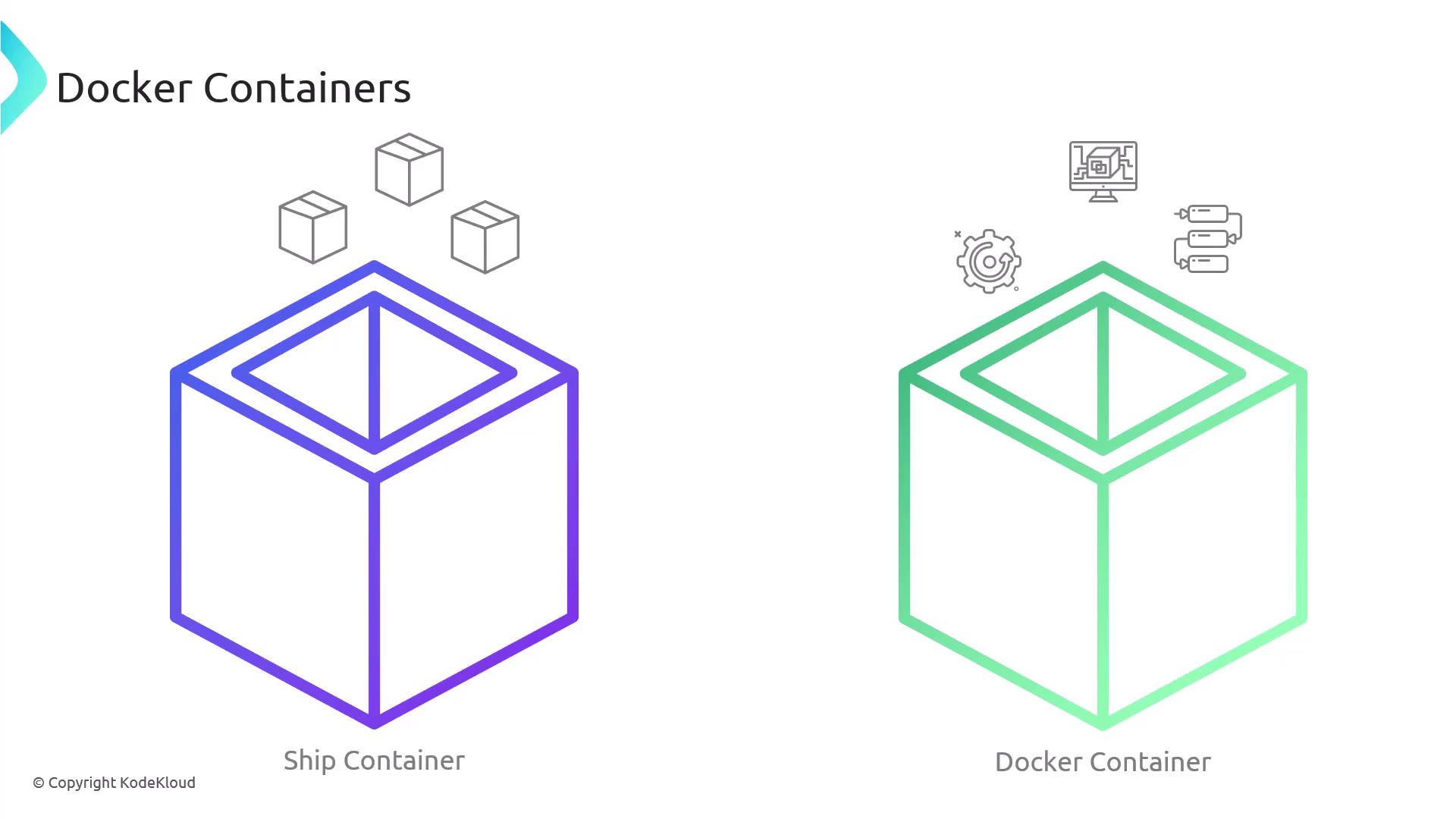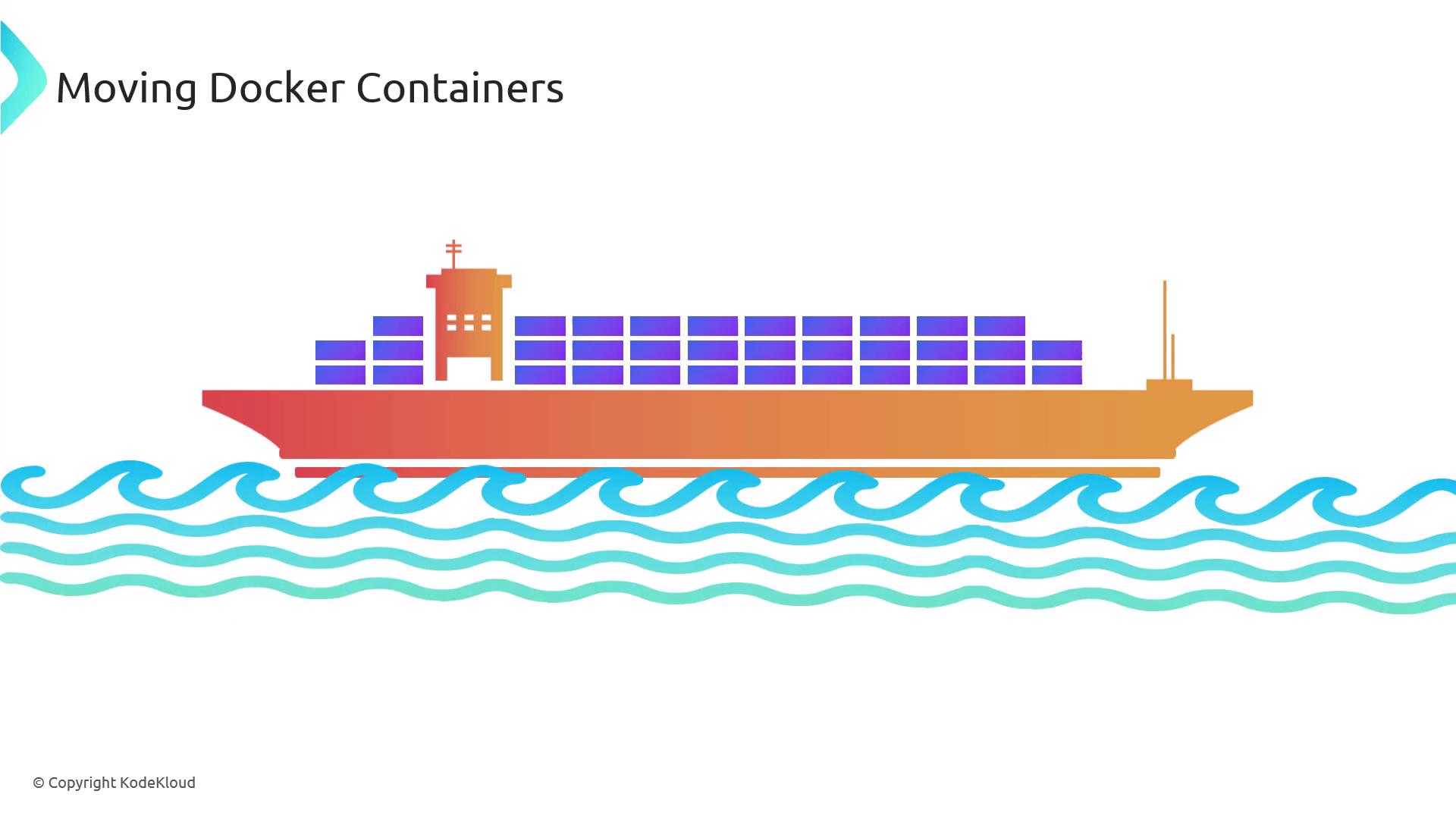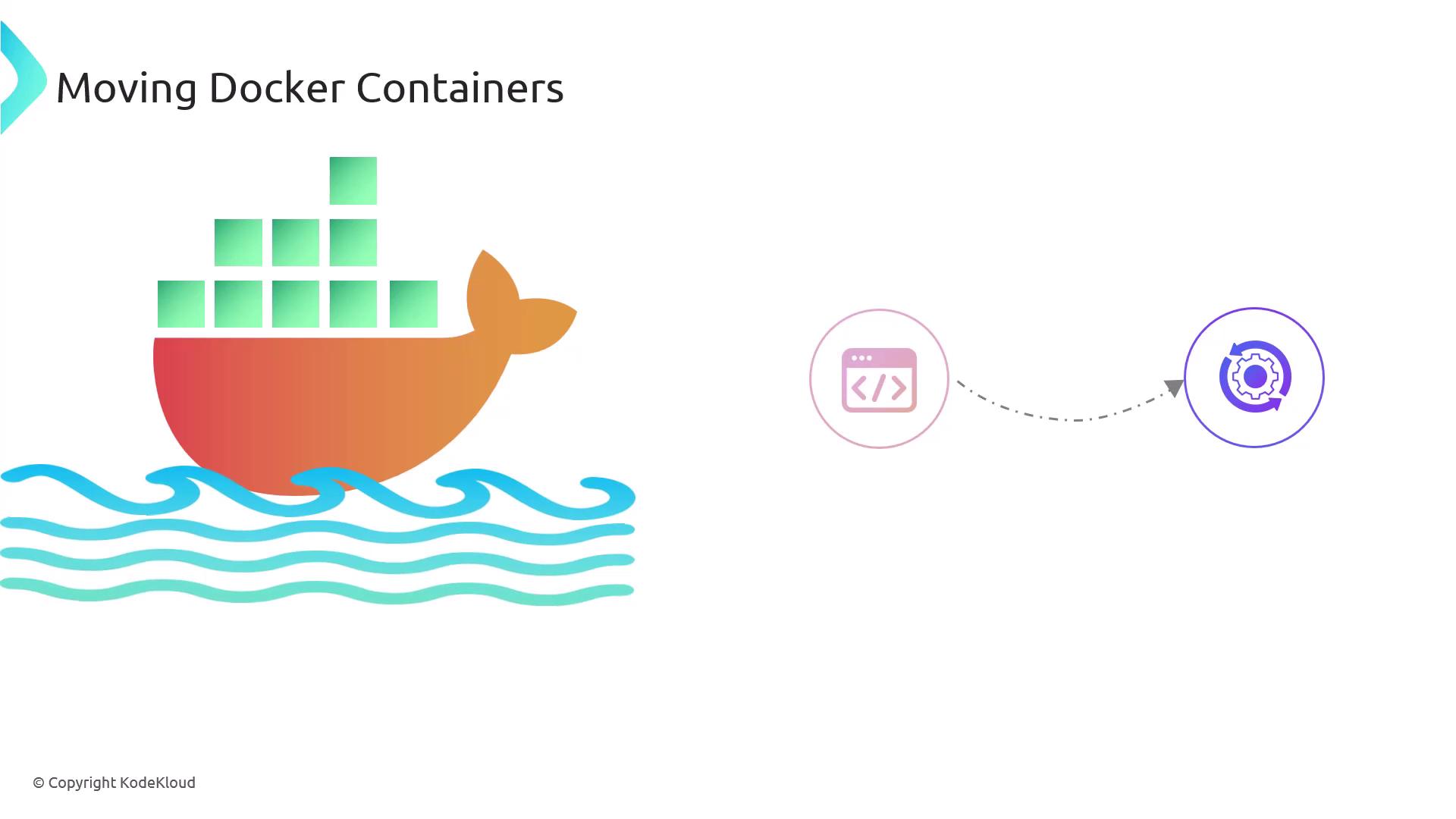Jenkins Project: Building CI/CD Pipeline for Scalable Web Applications
Docker
Docker Overview
In this lesson, we delve into Docker containers, exploring their core concepts and how they can be integrated into a CI/CD pipeline with Jenkins. We will start by discussing what Docker is and its benefits, then demonstrate its practical applications, and finally detail the steps to configure a CI/CD pipeline using Jenkins.
What is Docker?
Docker is a platform that packages every component your application requires into a single, portable container. Think of a Docker container like a shipping container: just as shipping containers transport a variety of goods without repacking at each stop, Docker containers bundle your application’s source code, libraries, dependencies, and runtime environment. This ensures that your application runs reliably regardless of the deployment environment.

The isolated nature of Docker containers ensures that everything an application needs is encapsulated, allowing it to run immediately upon deployment—eliminating the need for additional configuration.

How Docker Works
Using the shipping container analogy further: once your goods are securely packaged into a container, they are loaded onto a ship. In the Docker ecosystem, the role of the ship is played by the Docker engine. The Docker engine is vital for:
- Deploying containers
- Starting and monitoring container health
- Managing container lifecycles by restarting them as required

The Docker engine also ensures that containers run in isolation from one another, efficiently managing resources and overseeing lifecycle operations.

Advantages of Docker
Docker provides several powerful advantages that make it ideal for modern application development and deployment:
Standardization: Much like shipping containers, Docker containers offer a standardized environment. This means that an application packaged as a Docker container will run consistently across any machine with Docker installed, independent of the underlying operating system or hardware.
Isolation: Each container operates independently, ensuring that the dependencies and runtime setup of one application do not interfere with another. This isolation is key to running multiple applications on the same host without conflicts.
Efficiency: Docker containers are highly efficient and lightweight compared to traditional virtual machines. They start quickly and use system resources more effectively, enabling you to run more containers on a single host.
Portability: Docker containers can be easily pushed to container registries and deployed on any Docker-compatible system, enabling seamless transfers across environments.
Scalability: Docker simplifies the scaling process. When additional capacity is needed, additional container instances can be quickly deployed to handle increased demand.

Note
Docker's portability ensures that your development and production environments are identical, reducing the notorious "it works on my machine" dilemma.
Conclusion
This article provided an introduction to Docker containers, highlighting their benefits in terms of standardization, isolation, efficiency, portability, and scalability. By encapsulating applications in isolated containers, Docker simplifies deployment and scaling significantly. In the upcoming sections, we will explore how to harness Docker alongside Jenkins to build robust CI/CD pipelines for scalable web applications.
Transcribed by https://otter.ai
Watch Video
Watch video content